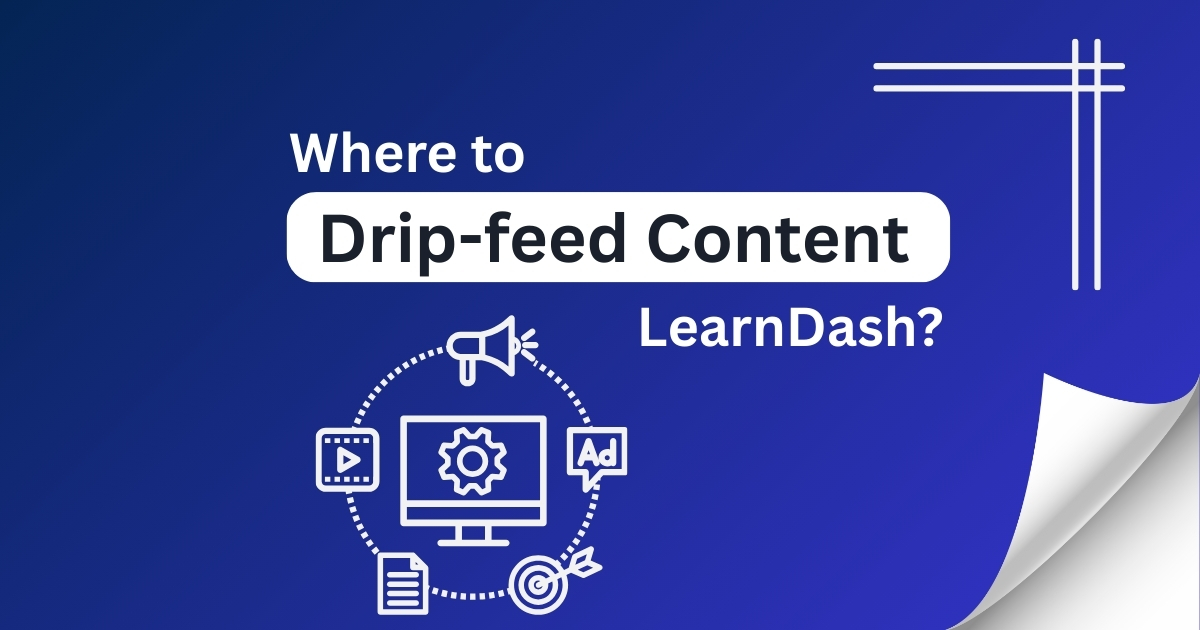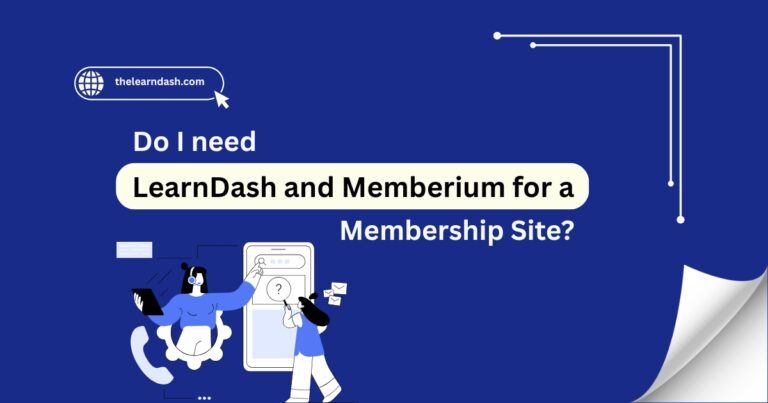Where to drip-feed content LearnDash?
Many online learners face a common issue: students often rush through the course without fully absorbing the material, or lose interest when faced with excessive content at once.
Learners may struggle to retain information without an organized approach, leading to lower engagement and completion rates. A great solution to this is by drip-feeding content, which involves gradually releasing lessons, topics, quizzes, and assignments.
This strategy keeps learners engaged, improves retention, and progress at a more manageable pace. But where should you apply this strategy for the best results?
Let’s dive into the best places for implementing drip-feed content effectively. Need expert guidance? Book our free consultation today!
Drip-Feed Lessons for a Structured Learning Path
A well-structured course should guide students step by step. Drip-feeding lessons allows learners to digest information at a steady pace, preventing them from skipping ahead or feeling overwhelmed.
For example, a four-week business course can release one lesson per week, ensuring students grasp each concept before moving forward. This keeps them on track and encourages active participation.
Release Topics Gradually Within Each Lesson
If your course has multiple topics in a lesson, consider drip-feeding these sections to enhance understanding. This works best for step-by-step tutorials, technical training, or courses requiring in-depth practice.
For example, in a coding course, students can start with “Introduction to Syntax” before unlocking “Basic Functions” in the following week. This structured approach ensures a solid learning foundation.
Schedule Quizzes to Reinforce Learning
Quizzes serve as an effective way to evaluate student progress. Instead of offering immediate access to new lessons, you can have students finish a quiz before advancing to the next section.
For example, a language learning course might require learners to pass a vocabulary quiz before moving to the next chapter. This strategy improves retention and ensures students are truly ready to advance.
Drip-Feed Assignments for Skill Development
Introducing assignments step by step allows students to develop skills progressively instead of feeling overwhelmed by multiple tasks at once.
For example, in a graphic design course, Week 1 might introduce a basic logo design project, while Week 4 requires students to create a full brand identity. This method ensures students build confidence and skills over time.
Use Membership Access for Exclusive Content
If your course includes bonus content, coaching, or premium resources, think about implementing a membership system to drip-feed content. This keeps learners engaged and motivates them to maintain their subscription.
For example, a fitness course can provide meal plans and workout routines weekly rather than all at once, ensuring learners stay on track with their goals.
Monitor and Optimize Your Drip-Feed Strategy
To ensure your content release strategy is effective, regularly track student engagement and make improvements where needed.
Example: If students drop off after Lesson 3, try adding a quiz or discussion to re-engage them. If weekly content feels too slow, adjust to bi-weekly releases.
Want to set up smart drip-feeding for your course? Take advantage of a 75% off on the original LearnDash license today and start creating a structured, engaging learning experience!







